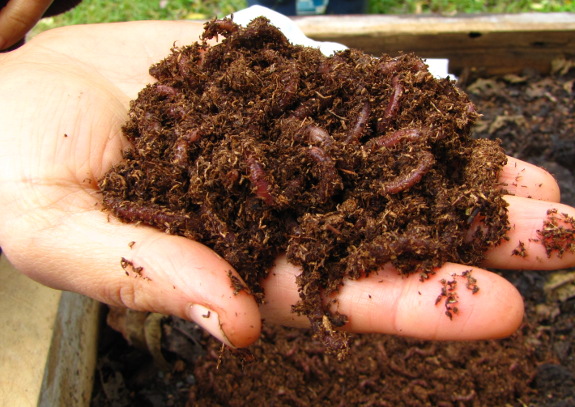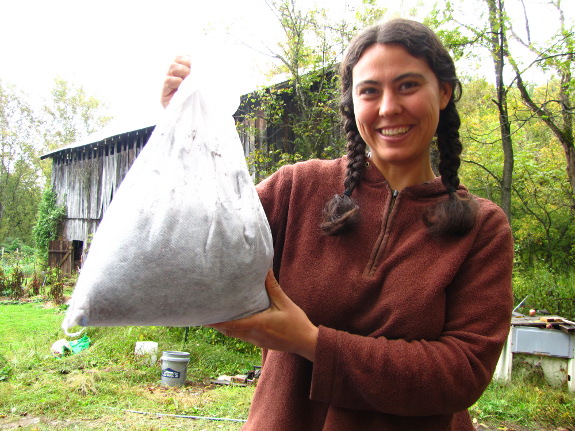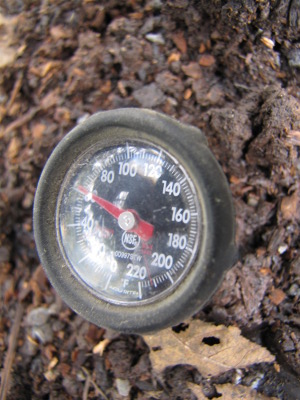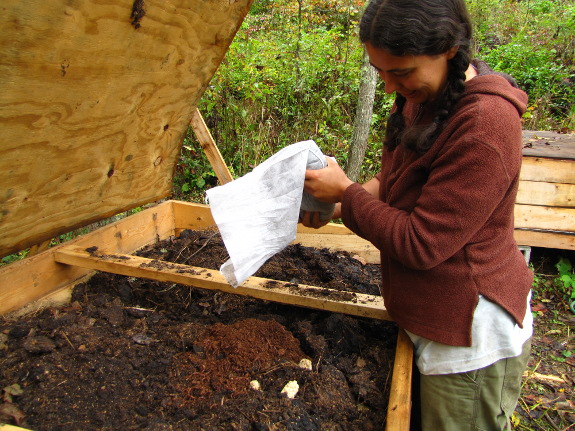
Letting compost mellow for the worms

Sometimes I hesitate to
tell you just how many stupid mistakes I make. But I figure if
even 1% of you are as dumb as I am, I can save millions of lives with
this post....

...Worm lives, that
is. Yes, the horse manure I seeded
compost worms into
earlier this summer was far
too hot for the
critters to survive. I ended up needing that manure for the
garden a couple of months later, and I looked carefully for wrigglers
as I emptied the bin out, but I found not a living soul.
 So
I did things differently the second time around. After filling
the three new bins up with horse manure and bedding, I left the lids
open for a few weeks so the contents would get well saturated with
rain. Wet compost allows microorganisms to work, so the bacteria
soon had the contents of each bin steaming. And then, slowly, the
warmth receded until the compost leveled off at ambient temperatures.
So
I did things differently the second time around. After filling
the three new bins up with horse manure and bedding, I left the lids
open for a few weeks so the contents would get well saturated with
rain. Wet compost allows microorganisms to work, so the bacteria
soon had the contents of each bin steaming. And then, slowly, the
warmth receded until the compost leveled off at ambient temperatures.
Time for another round
of worms! Even though the fault in the first batch was purely
management error, I decided to take the advice of one of our readers
and try a new source --- Red Worm Composting. We bought a three
pound bag for $70, and the worms showed up fat and happy, ready to
colonize the mellowed compost.
I dumped the worms on
the surface of the manure, a pound per bin. Rather than spreading
them throughout the large bins, I let each clump stick close together
since I know compost worms like colonies.

Except for one last bed
of lettuce, we've planted all of our crops for 2012, so the worm bins
will have all fall, winter, and early spring to work before I ask for
castings. Then I'll add fresh manure to one end of each bin and
let the wrigglers migrate over before scraping up the black gold to put
on the garden. Assuming nothing else goes wrong, I'm hopeful that
this will be the last set of worms we'll have to buy for a good long
time.
Want more in-depth information? Browse through our books.
Or explore more posts by date or by subject.
About us: Anna Hess and Mark Hamilton spent over a decade living self-sufficiently in the mountains of Virginia before moving north to start over from scratch in the foothills of Ohio. They've experimented with permaculture, no-till gardening, trailersteading, home-based microbusinesses and much more, writing about their adventures in both blogs and books.
Want to be notified when new comments are posted on this page? Click on the RSS button after you add a comment to subscribe to the comment feed, or simply check the box beside "email replies to me" while writing your comment.
- Remove comment
- Remove comment
